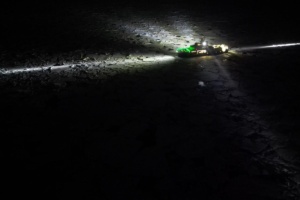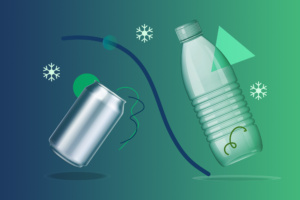Offshore wind will be a big part of this revolution. It is an energy source that is abundantly available and can be installed and operated while respecting nature. In the research centre I am heading, namely NorthWind, we carry out R&I to make this a reality, and we do this together with partners in Europe collaborating in EERA JP wind, and with international partners from all over the world.
The North Sea as a springboard for the green transition
The North Sea is in many ways the birthplace of the offshore wind development. This is where large offshore wind farms are already in operation, and more are in development. In Europe, by 2050, according to the European Commission goals, one third of the electricity consumption will be supplied by offshore wind. This will make offshore wind the backbone of the European energy supply.
To make this a reality, not only must we develop offshore wind farms as is done today, but we must also develop an offshore transmission grid to transport the electricity to the consumers, and we need solutions that ensure a reliable and safe supply to the consumers even when the wind is not blowing.
For this, the combination with hydrogen offers an excellent opportunity. This hydrogen can come from electrolysis, or it can come from natural gas with CCS. Both options will meet climate targets while at the same time ensuring a reliable and safe supply of energy.
The combination with other renewable generation on land and offshore, energy efficiency measures, load flexibility and alternative energy storage technologies, make this not only a vision, but a system that can realistically be developed to reach the goal of a net-zero power system (for Europe) by 2050.
Indeed, it will not be easy.
Taking nature into account
There are significant challenges that must be solved. One of these is how do you develop offshore wind with a minimum impact on the marine life? Offshore wind is an opportunity to provide energy with respect for nature, but it has an impact. There are disturbances during construction, there is acoustic noise during operation, there is risk of birds colliding with the turbines and so on. The good news is that we can develop solutions that minimize any such negative impacts.
One example of such solutions being developed is the development of floating wind. This is a technology in which the turbines are floating in the sea and just fixed to the seabed with mooring lines, much in the same fashion as a ship that is anchored. This means there is no piling noise for fixing the tower to the seabed as is the case for the bottom-fixed turbines.
Floating turbines can also be installed at deep sea locations – which is what most of the sea is – which makes it easier to place them away from sensitive sea species or migrating birds.
Reducing costs
The challenge here is to develop the floating technology to a level where it is as affordable as bottom-fixed technology. I believe a target of 50 EUR/MWh for floating wind by 2030 is realistic, provided that sufficient efforts in terms of research, innovation and deployment are put into the development.
I am positive that a net-zero CO₂ energy system can be built and operated. The challenge is to find solutions to do it at a minimum cost and while taking care of nature. To develop such solutions, the North Sea is an excellent springboard. This is where we already are working to establish the solutions for the future, and this is where we can go on to make the vision of a net-zero system a reality. It is, I would say, the perfect challenge for Europe.
A lighthouse initiative
Together with European colleagues in EERA JP wind, we have concrete suggestions for R&I that should be addressed in a major European project to make floating wind cost-competitive and to provide affordable solutions that will make offshore wind the backbone of the energy system. We call this a lighthouse initiative.
What is a lighthouse initiative?
The term “lighthouse initiative” refers to a visionary, science-driven large-scale initiatives with significant budget (tens of millions of Euros) and duration (5 years or more) that will address grand scientific and technical challenges that are crucial for the further advancement of offshore wind energy, providing new knowledge and basis for innovation. It can be realized as a collection of research projects that are set up according to a roadmap to achieve a certain goal, or it can be a large programme-like project.
To reach this beautiful vision, a strong increase in research and innovation is paramount. The challenge is so big that we need international collaboration. We basically need all people on deck. We cannot afford any shortcuts. We must develop solutions that not only reach climate goals, but also respect nature. I would remind you all that this is not only a challenge that we must win; it is a great opportunity to create new green jobs, and put shortly, a better world for all of us.
[blue_box]This article is based on a speech made by John Olav Tande at COP26, the UN’s Climate Summit, in Glasgow, UK. The speech was a part of the event The North Sea as a springboard for the green transition, which took place on November 9th, 2021.[/blue_box]








Comments
No comments yet. Be the first to comment!